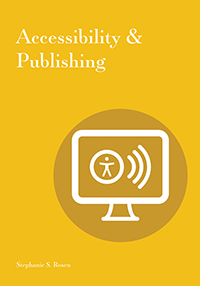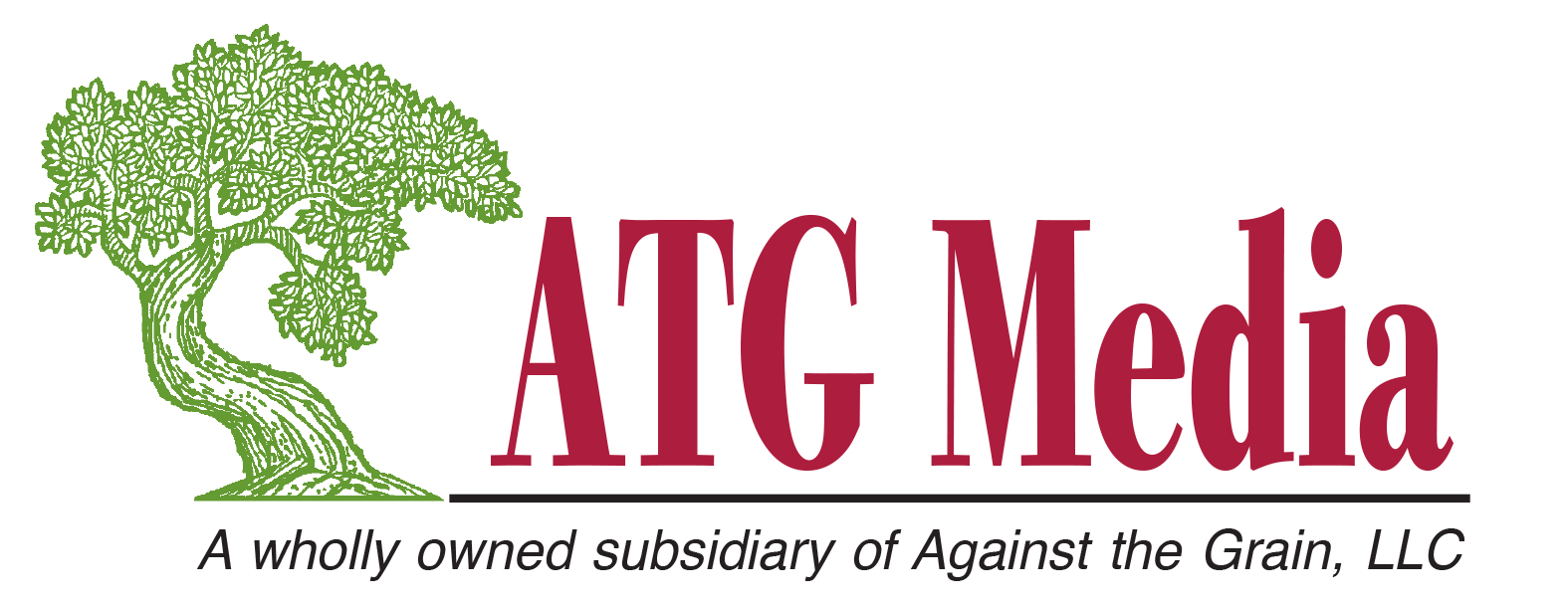
Accessibility & Publishing
Skip other details (including permanent urls, DOI, citation information): This work is licensed under a Creative Commons Attribution-NonCommercial-NoDerivatives 4.0 International License. Please contact [email protected] to use this work in a way not covered by the license.
For more information, read Michigan Publishing's access and usage policy.
Chapter 8. Platforms
While publishing platforms have grown far more complex than the first online journals of the 1990s, today’s versions still perform the same basic functions: publishing, hosting, and disseminating. And through these functions, platforms have a similar opportunity to promote accessibility in publishing. Even for complex platforms that host author-uploaded content, coordinate peer-review, or measure reader statistics, the steps toward accessibility are the same. Platforms can make a commitment—then adopt workflows and formats to meet it—and set requirements for content—then provide resources to support authors in meeting them. Several examples in recent years, with major incentives from large funding organizations and the government, show this kind of platform-driven accessibility.
Mellon-Funded Open Access Publishing Platforms
The Andrew W. Mellon Foundation Program in Scholarly Communications began focusing on long-form digital publication in the humanities, with an eye toward the future of the monograph, around 2013 (Waters, 2016). In recent years, this program has conducted a great deal of research and grant-making around the digital monograph and the features that will define it in changing information environments. Funded projects have taken up specific challenges in this area including open access, economic sustainability, reader metrics, and accessibility. Two projects in particular, Fulcrum and MuseOPEN, have put accessibility at the center of the platform.
Fulcrum is a project led by the University of Michigan in partnership with the University of Minnesota, Indiana University, Northwestern University, and Pennsylvania State University. The platform is designed to host scholarly materials supplementing a monograph, monographs and journals themselves, and “new forms of multimodal publications” in a way that is flexible, durable, and discoverable (“Fulcrum,” n.d.). From the beginning, this project has made accessibility a priority in its platform design, “performing accessibility checks and tests and making numerous adjustments to ensure WCAG 2.0 AA compliance” (Baker-Young, 2017), and in its requirements for submitted materials.
The outcome is that the platform is incorporating accessibility at every stage of design and redesign, resulting in a platform that works toward accessibility constantly, even as it grapples with technically difficult implementations, like a custom-built Web-based EPUB reader. Furthermore, the platform requires authors to provide supplemental materials in the service of accessibility, notably textual equivalents for visual and multimedia. This means educating authors and affecting the industry by preparing more authors who care about and better understand preparing accessible publications.
MuseOPEN kicked off in 2016 as a project to host Open Access monographs in the humanities and social sciences alongside the existing Project MUSE collection of scholarly journals in those fields. This Mellon-funded project has made accessibility a priority for its own design and for its content. In 2017, the project posted fifty-six pages of “comprehensive publisher guidelines … for maximizing the accessibility of books for users with a variety of disabilities that negatively affect their ability to use Web-based content … [including] visual, auditory, physical, speech, cognitive, and neurological deficits” along with a commitment to “update the guidelines as standards and practices evolve“ (Queen, 2017).
The commitment to education is key to a platform-driven approach to accessibility in the current publishing landscape. Authors, editors, and publishers who are new to accessibility will require support and in some cases context-specific educational materials, like the MuseOPEN guidelines. Platforms that invest this work into educating their constituents will benefit from quality content that meets format standards for increased accessibility, flexibility, and future compatibility, and the individuals involved in such projects—authors, editors, designers, and programmers—may bring their newly learned accessible practices to other publications, platforms, and projects.
Public Access to Federally Funded Research
In February 2013, the Obama White House Office of Science and Technology Policy (OSTP) released a memorandum on “Increasing Access to the Results of Federally Funded Scientific Research” in which the OSTP stated its commitment to “ensuring that, to the greatest extent and with the fewest constraints possible …, the direct results of federally funded scientific research are made available to and useful for the public” (Holdren, 2013, p. 1). The memo set out concrete directives toward this end, requiring that each federal agency with more than $100 million in annual research expenditures would:
- develop a “Public Access Plan” to support increased public access to both scientific publications and digital scientific data resulting from research funded by the federal government (Holdren, 2013); and
- “ensure that publications and metadata are stored in an archival solution that … provides access for persons with disabilities consistent with Section 508 of the Rehabilitation Act of 1973” (Holdren, 2013, p. 4).
As a result of this directive, agencies created public access plans and identified public platforms in which accessible publications and datasets could be deposited. The plans and databases for each affected agency may be reviewed in lists compiled by libraries and information organizations (Columbia University Libraries, 2016; CENDI, n.d.; Association of Research Libraries, n.d.). Identified databases have taken additional steps to improve accessibility in terms of compliance with digital accessibility standards and in terms of broad availability via multiple channels. For example, PubMed Central, the database platform identified by multiple government agencies (including the National Institutes of Health, Food and Drug Administration, and Department of Veterans Affairs) and managed by the National Center for Biotechnology Information and National Library of Medicine—is “making every effort to ensure that our sites are accessible” (S. Helson, personal communication, February 27, 2018). PubMed also provides support and basic conversion technologies to ensure that deposited articles are accessible to users with disabilities and integrates deposited materials with “large NIH research databases such as Genbank and PubChem” to “accelerate scientific discovery” (National Institutes of Health, 2014).
This government-driven mandate for accessibility promotes digital accessibility and equitable access for people with disabilities (508 compliance), as well as public access and open access. It attempts to ensure that knowledge and data produced by publicly funded research is, in turn, available to the public, and not just to some members of the public. Like the Mellon-funded examples, it uses funding as a lever to make change in accessibility, to drive innovation in digital publishing practices and more fully realize the promise of access and the possibilities of born-digital information. In all of these examples the platform is key, positioned as a gateway in the publishing stream that can drive change in multiple directions.
Licensed Electronic Resources
Electronic resources—vendor-supplied digital collections to which libraries subscribe and provide access—are another type of platform with the potential to advance accessibility. They represent a growing share of academic library collections and, by 2020, are projected to account for 80 percent of academic library collection-building expenditures (OCLC, 2015). Although e-resource platforms are not usually the publishers of content, as database collections of digital content they have a similar opportunity to commit to accessibility in their own interfaces and promote accessibility in the content they host and disseminate.
The most common types of licensed e-resources are e-journals, e-books, and full-text (aggregated) databases (Johnson et al., 2012), all of which have the potential to take advantage of digital accessibility standards. Unfortunately, research shows that most electronic resource offerings are inaccessible at the platform level, content level, or both. A 2016 crowd-sourced testing project of forty-four major e-book platforms found that only two platforms received a high score (i.e., the platform and content implement 65% or more of the tested accessibility features) and only thirteen received a high potential score (the platform supports 65% or more of tested accessibility features) (“E-book Audit 2016,” 2016). Research on electronic journal platforms has found that 25 of 32 major platforms “rated as marginally accessible or inaccessible” (Tatomir & Durrance, 2010, p. 588). Recent evaluations of several platforms for both e-books and e-journals have found that the majority continue to have significant accessibility barriers (Big Ten Academic Alliance, 2018).
We have yet to see an electronic resource vendor use its position as a platform to significantly advance accessibility, making change among its content publishers and for its users. However, librarians “are becoming noisy” about the lagging progress in this area (McNaught, MacMullen, Smith & Dobson, 2018), and some vendors have made major commitments to accessibility for their platforms (EBSCO, n.d.; ProQuest, n.d.). If e-resource platforms continue to improve in accessibility and more publishers begin to produce born-accessible content, the real accessibility of licensed e-resources can change drastically in the near term.


